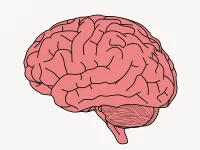With over 100,000 people on the transplant waiting list, not all of them have a chance to receive a matching organ in time. Due to insufficient supply and long waiting times, organ failure is one of the leading causes of death. To combat this, scientists are stepping up to counter this challenge by developing 3D bio-printed organs, ensuring that each patient has equal and quick access to life-saving organ transplants.
Though the field is relatively new and upcoming, there has been considerable progress showing hope for the future. Recently, a mini human heart has been 3D printed by a Boston University research team using stem cells, or cells that can develop into many different specialized types, and the heart (made of living tissue) is able to beat. The researchers are excited about the prospects this opens up for studying how the heart is affected under various conditions, such as how the heart behaves when affected by disease, or how it performs when new drugs are administered. There is a long way to go before bio-printed organs can be transplanted into patients, but these small achievements and discoveries prove that steps are being taken in the right direction.
One of the most important pieces to the puzzle of 3D printing is the printing process and technology itself. Scientists start by directly taking cells from the patient from the target organ or tissue, and they force the cells to revert to pluripotent stem cells, which are capable of differentiating into a variety of cell types. Scientists can then place them in specific conditions to influence them to become the desired cell type that would form the final bio-printed organ.
“Scientists start by directly taking cells from the patient from the target organ or tissue, and they force the cells to revert to pluripotent stem cells, which are capable of differentiating into a variety of cell types. Scientists can then place them in specific conditions to influence them to become the desired cell type that would form the final bio-printed organ.”
Since the cells are derived from the patient themself, researchers can first test treatments on the bio-printed organ to observe its reaction before administering the treatment to the patient to avoid any risks or adverse effects. Patients can avoid undergoing multiple treatments that could put a strain on their bodies while scientists can find the optimal method of working on the bio-printed organ. Moreover, a transplant would have a greater chance of being accepted by the patient’s immune system because it would recognize its own cells.
Next, cells are then cultivated in a sterile bioreactor that imitates the conditions of the human body. Specific nutrients are provided to the cells by immersing them in media, a fluid that supports cell growth, to influence their differentiation. Then the cells are combined with bio-ink, a mixture of living cells, and hydrogels that mimic the body’s extracellular matrix, cell media, and growth factors. The combination ensures that the cells will continue multiplying into the desired type. The most popular materials for hydrogels are collagen and gelatin because they are non-toxic and biodegradable, preventing any adverse reaction from the immune system.
The bioprinting process is very similar to typical 3D printing; however, instead of loading a plastic material, the bio-inks are loaded into the printing chamber, where each one corresponds to a certain cell type. The printer is programmed with the shape of the organ and the patient’s personal characteristics from previously collected data in order to replicate a compatible tissue. The organ is built layer by layer, and the process duration can take up to several hours depending on factors such as the type of organ, the number of printheads, and the precision of printing. In total, the timeframe from taking a patient’s biopsy to transplanting the organ is between four to six weeks, a significant improvement compared to the current months-long or year-long wait to get off the waitlist.
Creating a bio-printed organ seems straightforward, but the process has a long journey in optimizing the process and creating a fully functional organ. Organs are extremely sensitive and require a lot of effort to maintain and fully mature, so they will perform as needed in the human body. Resolving these issues requires even more thorough research into keeping the organ stable and sustaining it in the body, and it is estimated to take up to a decade even with the progress that has been made.
Despite the challenges that lie ahead, the tremendous achievements that have been made, for example, with the research team at Boston University, open up opportunities for studying diseases and medications outside of the body to make sure the patients will receive effective treatment without side effects. With more advancements in the future, the hope is that we can save more lives with bio-printed organ transplants without putting others at risk.






